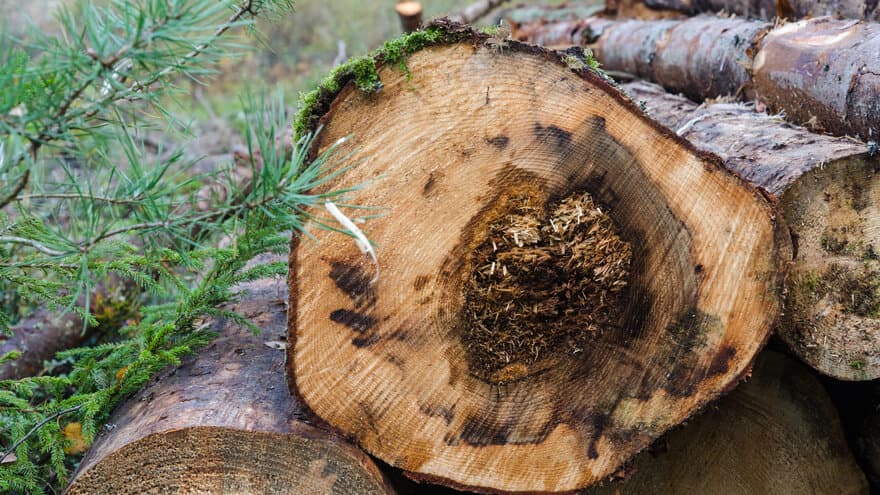In his PhD, Benjamin Allen has tested the utility of remotely sensed data for detecting root, butt and stem rot in Norway spruce. His results yielded moderate accuracies, and more work needs to be done before it can be implemented in operational forestry.
The rot fungus (Heterobasidion parviporum) is the main cause of economic losses in the Norwegian forestry sector.
Root, butt, and stem rot, or just “RBSR”, leads to decay. Decay in the tree stem leads to reductions in wood quality and associated economic losses. The loss, or reduction in timber value for spruce, is estimated to be more than NOK 100 million per year.
“The trouble with rot is that it is hard to spot in the field,” PhD candidate Benjamin Allen says.
“Not to mention that all trees in an area needs to be examined.”
This makes manual detection with field methods time-consuming and cost prohibitive. Remotely sensed data has been proposed as an alternative method of detecting RBSR. In his PhD, he has tested the utility of remotely sensed data for detecting RBSR in Norway spruce.
Comparing data from different sources
In his work, Allen has compared different types of remotely sensed data: airborne hyperspectral imagery and UAV-based hyperspectral imagery, with different sensors. He has also compared the classification accuracies obtained with airborne hyperspectral imagery, airborne laser scanning, and historical multispectral imagery used alone and in combination.
Fusion of airborne hyperspectral imagery and airborne laser scanning delivered the highest classification accuracy (66.1%). Hyperspectral imagery delivered the highest accuracy of any data source when used alone (64.3%), followed by airborne laser scanning (59.3%).
We’re not there yet
“The results indicate that detection of RBSR infection in Norway spruce with remotely sensed data is possible,” Allen says.
“However, the classification accuracies I obtained were modest.”
He thinks that there is potential for better solutions in the future.
“Hyperspectral imagery and airborne laser scanning appear to be the most promising technologies,” he comments.
“But the job is not done. Further research should aim to apply these methods to detecting RBSR in other tree species and to assess the utility of applying these methods in operational forestry.”
Benjamin James Allen will defend his PhD thesis “Detection of Root, Butt, and Stem Rot in Picea Abies with Remotely sensed Data”, Friday the 24th of March 2023. The trial lecture and PhD defense are public and open to all.
